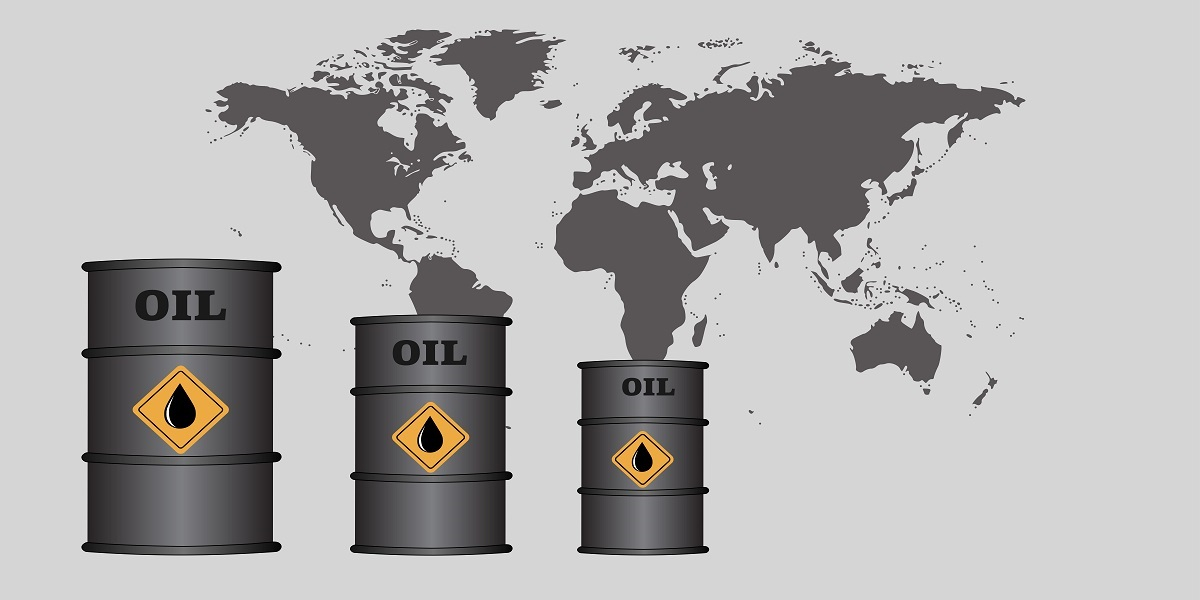Long-term outlook for Oil - 5 factors that can shape it

M. R. Raghu, CFA
02 December 2022
Brent started the year 2022 at $73/bbl, reached a peak of $113/bbl, somewhere in June and gradually corrected to $81/bbl now. The Russia-Ukraine war, Fed, recession fears among others shaped and guided the oil price during the year. Stepping into 2023, it is interesting to see the tension between producers and consumers of oil. This is an attempt to deduce long-term global trend for energy in general and oil in particular. There are some structural trends that are shaping the course and they are examined below:
- Energy Security: Before the Russia-Ukraine war, world was moving with steadfast devotion towards energy transition. The idea was to reduce the share of fossil fuels (now accounting for more than 80% of the pie) and increase renewals and clean energy. New investments even by traditional oil majors have been always directed towards renewals to score ESG brownie points and win investor endorsement as well. However, the war changed the narrative totally as Russia was among the largest producer and exporter of oil to many global destinations including Europe. When sanctions and embargoes were imposed on Russia, worries about oil supply mounted taking the price up as well. Given the fact that US, Russia and Saudi Arabia dominate the oil market, disruption in one of the three is bound to stir concerns especially among major oil importers i.e., China and India. While the good news is that much of Russia oil, otherwise embargoed in other parts of the world, found its way into China and India thus making it a zero-sum game. But it did change the narrative from energy transition to energy security. The current war kept the total oil production almost intact but redirected their flows. However, the worry for long-term is if current production levels are affected it can spike oil price and hence the import bill. Hence, major importers may start focusing on building their strategic petroleum reserves in anticipation of such a trend. While the aspect of energy transition serves the cause of oil importers well in the long-term, I believe it will be pursued less vigorously compared to energy security. That is oil price positive.
- Demand Scenario: As US is widely expected to enter into a recession in 2023 while Europe is already into one, this is being viewed as a minus from oil demand angle. However, India is expected to clock a growth rate of 7% in GDP while China is expected to grow at 3.5% in 2023. Together they account for a lion’s share of incremental oil demand. Hence, while overall demand for oil is bound to be affected by US and European recession, it can very well be balanced out by India and China, especially if China loosens its Covid restrictions and brings back some more growth to the system. Given the protests that we see in China, it may happen sooner than later. Also, the shift in focus from energy transition to energy security may see the demand up for the short-term. However, in the long-term (next 10 to 15 years), world will move away from fossil fuels towards renewables as it can meet multiple goals including climate change pressures on countries. However that transition need not be as swift as analysts are penciling today. This gives sufficient room for oil demand to taper off in an orderly manner. This is oil price negative for the long-term.
- Supply Scenario: The biggest Achilles heel for the supply is the decade long underinvestment in oil discoveries and extraction. Except for National oil Companies (NOC’s) based in the Gulf, oil majors like BP Shell, Chevron and Total have lagged in investment due to investor and board pressures to go clean. The consistent under investment have been overlooked by many and has laid the foundation for tight oil supply going forward. This has given room for OPEC+ (OPEC+ Russia) to control the sparse spare capacity in order to shape oil prices. Tight supply can also mean that any geopolitical disruption to oil fields in US or Saudi Arabia or Russia (due to natural or unnatural events) can have the potential of taking some supply off the market. The tight supply triggered by decade of under investment and the geo political threats can be oil price positive.
- Peak Oil: Peak oil is the point in time where oil production peaks and from there it can only be a decline. Analysts have called peak oil many times in the past only to be on the wrong side of the call. Since then, the question of peak oil keeps coming back with no answer of course. This time around, thanks to Russia-Ukraine war, Europe and to an extent US will move aggressively towards energy transition via renewables. That can actually bring peak oil to reality (finally) and major oil exporters (OPEC+) will then focus on maximizing revenue opportunities by converting oil below the ground to wealth before it becomes redundant. If peak oil is clearly in sight, a rush to maximize oil below the ground can actually be oil price negative.
- Renewables: Technology advances have reduced the cost of renewables significantly during the last one decade be it wind, solar, hydrogen, etc. Hence the unit economics of generating solar power or hydrogen power is much better today than before and can only get better. This sets the structural shift towards renewable energy. However, presently bulk of electricity generation in the world needs the support of coal, oil and gas and in some parts of the world nuclear (mostly Europe). Electricity generation and transport constitute bulk of energy consumption in the world. The speed with which renewables can replace conventional energy sources for these two most important consumption items will determine the long-term trend. The aspect of renewable gets interesting for GCC producers and exporters like Saudi Arabia, Abu Dhabi and Kuwait. Most of their electricity generation needs are being fired by oil and gas and this results in less oil to be exported. As these economies are almost totally dependent on oil and gas, it makes immense sense for them to accelerate on renewables and replace their electricity and transport needs away from oil. From an opportunity cost point of view this can free them more oil to be exported. This becomes crucial especially in a peak oil scenario. Another aspect of renewals is the transition towards electric vehicles touted as the green form of transportation. However, research shows that producing electric vehicles (especially batteries) is a serious call on non-green sources and hence benefits of EV’s cancel out with their cost. That is a hurdle that governments will find it difficult to jump. On the whole, the rapid strides that will be made in favor of renewables is oil price negative.
In summary, energy markets especially oil is in for an interesting transition both in the short and long-term. Given their large share in the energy consumption, the change can be gradual and maybe long as well. This gives enough room both for importers and exporters to prepare for a world that depends less on fossil fuels. Barring any geopolitical turn of events that can bring large swings to this assessment, ceteris paribus oil can ride a healthy, strong and gradual decline.
Stay Tuned To Marmore MENA Insights!
Never miss a patch or an update with Marmore's Newsletter. Subscribe now!
Related Article
The uptick in MENA Eurobond issuances – A sign of things to come?
MENA debt issuances have touched record highs in Q1 2025. Will the uptick continue in subsequent quarters?
Read MoreKuwait’s Approval of Public Debt Law: Re-emerging on Investors’ Radar
Kuwait has passed the long-awaited debt law in March 2025. The blog explores the importance of the law, the expected benefits and outlook for the countrys return to debt markets.
Read MoreThe Dynamic Rise of Fintech in the GCC
The convergence of technology and finance is reshaping the GCC Financial Ecosystem. The blog explores key players, regulatory framework and market dynamics of Fintech in the GCC region.
Read MoreTags
No Tags!




